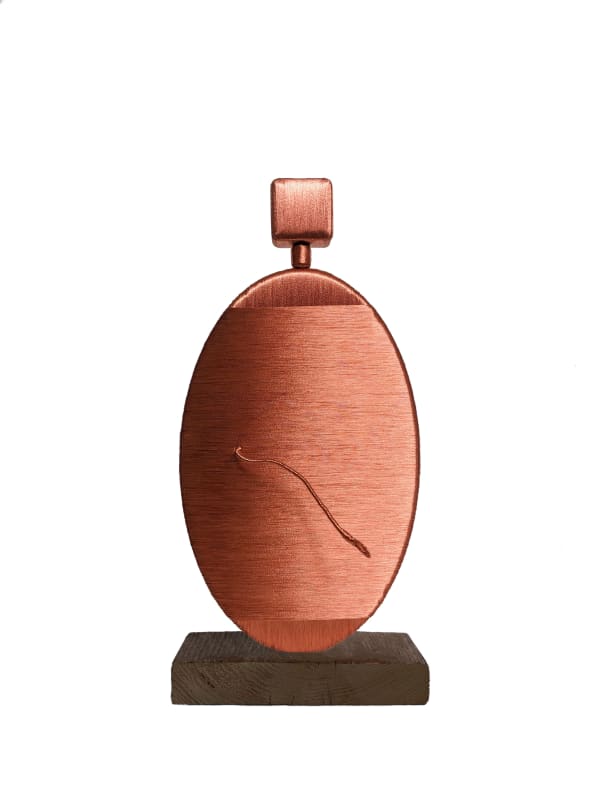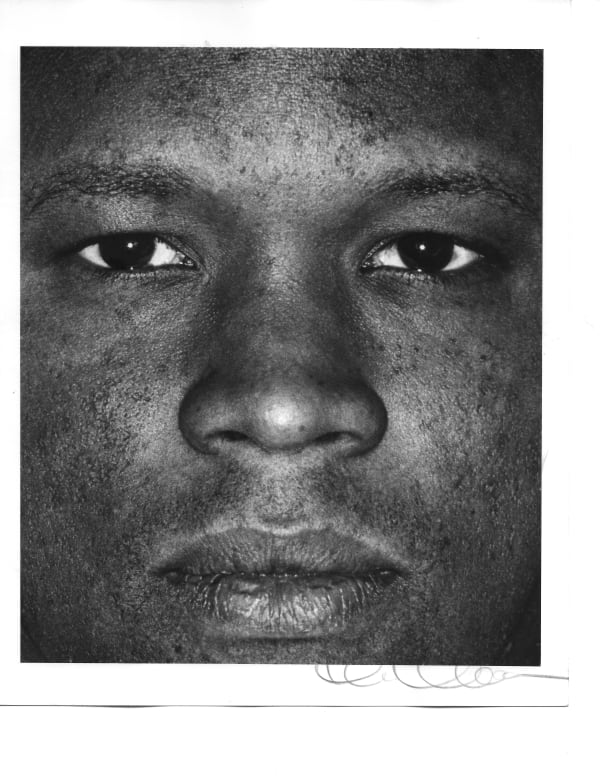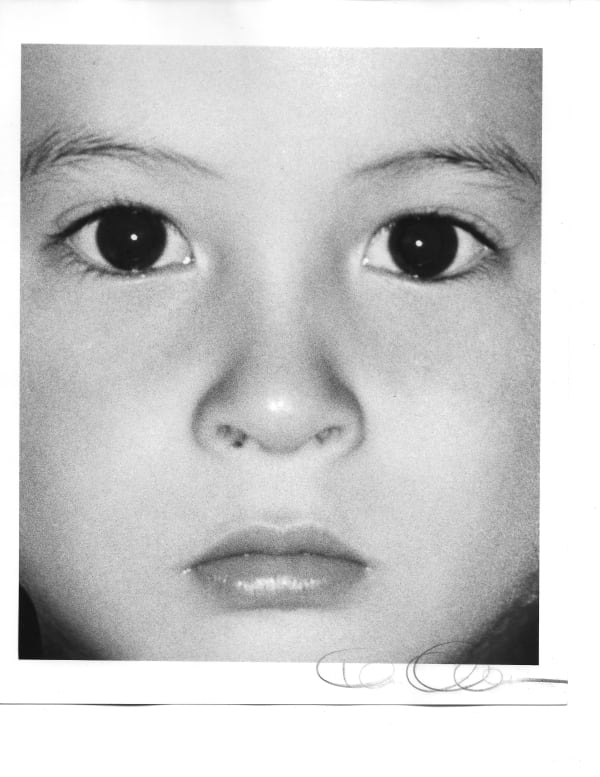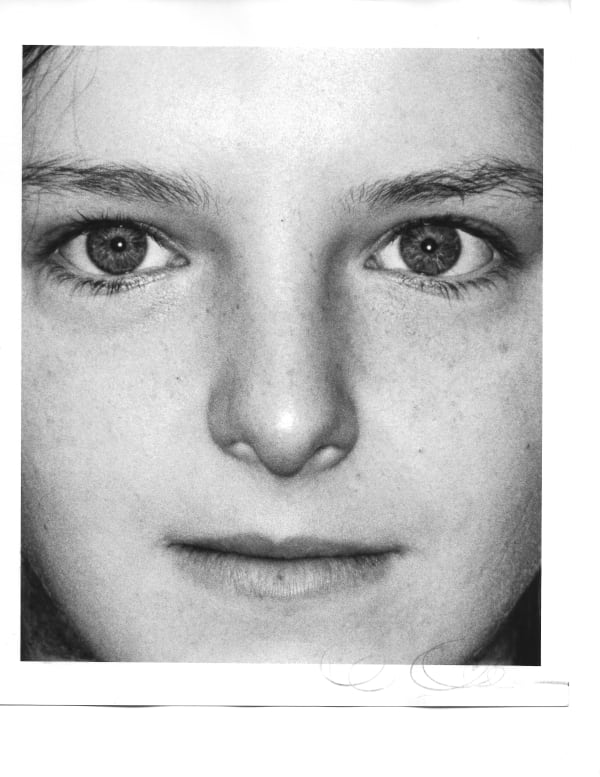Galerie La Patinoire Royale Bach presents a group exhibition For a Language to Come centered on the artistic use of systems and languages. The six artists are presented in formal and conceptual dialogue with one another. The seriality of the faces and objects in Ken Ohara’s legendary 1970 photographic series ONE mirrors Thomas Devaux’s condensed representation of the iconic Shopper reflecting our narcissistic desires. The rituals of technological objects in Alice Anderson's monumental Spiritual Machines, comprised of 41 statuettes, resonate with Lita Alburquerque's photographic drawings, imbued with sacred geometry. A succession of various fires as divine punishments subtly added by Renaud Auguste-Dormeuil to found postcards welcome Wortmischungen, the new language generated by LAb[au] that aggregates in a single but almost infinite series of artworks the essence of all things : colors and words.
-
Alice Anderson
Spiritual Machines -
Winner of the Prix SAM 2023 for contemporary art, finalist for the Prix Marcel Duchamp in 2020, Alice Anderson's artistic practice lies at the intersection of spirituality and technology. Anderson forges a unique language through her performances of the power and intelligence of the body, alone and collectively, dancing with objects and spaces. From these intuitive, gestural Technological Dances, in which the performer poetically reactivates the strong link between the human and the nonhuman, large-scale paintings are born. Computers, drones, batteries, virtual reality masks (etc...) are coated in paint, leading the artist into a dance of hyper-ventilated breathing that guides her into a trance, where objects animated by repetitive movements generate points of impact on the canvas on the floor. These technological objects, memorized on the canvas through painting, are then assembled and crystallized with copper-colored wire - a material symbolizing neuronal and technological connections - to become sculptures. Alice Anderson's monumental sculptural work Spiritual Machines, an ensemble of technological tools crystallized in this way, was created over a period of ten years and memorizes the objects of the Anthropocene era. The title Spiritual Machines refers to the book The Age of the Spiritual Machines, published in 1999 by artificial intelligence pioneer Ray Kurzweil. Anderson has recently exhibited at the Stedelijk Museum, Centre Pompidou and Atelier Calder, among others.
-
LAb[au]
Wortmischungen -
At Art Brussels we offer a premiere look at LAb[au]’s new series Wortmischungen (mixtures of words), which will open in two exhibitions, one at the gallery, and one at Botanique in late May. The artists use an algorithm to link two colors – both in name and in form – to see what their fusion creates linguistically and visually. To create Romantik, for example, they mixed rot (red) and kamin (carmine), to create a work that dances along the tension between the intuitive, emotional and perceptual and the logical, analytical and conceptual. As crossing words is not the same as mixing colors, the monochromes produced within this antagonism speak to the long and dualistic relationship between the visual and the written, between the image and the language. The works are stored in index card drawers, creating a dictionary of possible alchemies, and presented as incantations framed on the wall. The artistic collective has exhibited in institutions including MOMA, la Biennale di Venezia, Centre Pompidou, the New Museum, Le Louvre, etc.
-
In a set of 5 photo-drawings of her installation at the Pyramids in Giza in 1996, Lita Albuquerque layers graphs, symbols, honeycomb structures and a replica of the map of the stars she created in situ for her Sol Star desert performance for the Cairo Biennial, where she represented the United States and won first prize. Albuquerque is a canonical female Land Artist known for her use of pigment in her large-scale, site specific ephemeral works. She was recently included in Groundswell - Women of Land Art at the Nasher Sculpture Center, and the Light & Space exhibition at Copenhagen Contemporary, and held a solo show at La Patinoire that brought her Land Art indoors for the first time in Europe.
-
In D’après nature, Renaud Auguste-Dormeuil has created a series of painted postcards that overlay nostalgic iconography with unforeseen disaster. He uses found historic photographs and engravings of monuments that he manipulates to insert a record of fires that devastated the sites in subsequent years. The repetition of his process for the treatment of the various locations extends into an immersive language evoking derridean hauntology — “time is out of joint” — and an unsettling historiography of triumph and catastrophe. Auguste-Dormeuil is laureate of the Prix Meurice pour l'art contemporain, a former resident of the French Academy in Rome and has exhibited at Villa Medici, MACRO, Palais de Tokyo and others.
-
 GRAIN P-1, 1993Gelatin silver prints mounted under Plexiglass240 x 197.2 cm
GRAIN P-1, 1993Gelatin silver prints mounted under Plexiglass240 x 197.2 cm -

-
* Takuma Nakahira, For a Language to Come, 1970 Fudo-sha, Tokyo
![LAb[au] Wortmischungen: 001 Romantik [ Rot = Kamin ], 2024 Pigmented Print on MDF 21 x 30 cm](https://artlogic-res.cloudinary.com/w_355,h_400,c_limit,f_auto,fl_lossy,q_auto/ws-artlogicwebsite1524/usr/images/viewing_rooms/group_images_override/items/12/1221f2e4c8b5493cbe4f6cbcad05ab39/romantik.jpg)




![LAb[au], Croyance [Cyan + Ocre], 2024](https://artlogic-res.cloudinary.com/w_600,c_limit,f_auto,fl_lossy,q_auto/artlogicstorage/lapatinoireroyale/images/view/f04b53ab739b248ef2e82ad5a37d5697j/galerielapatinoireroyalebach-lab-au-croyance-cyan-ocre-2024.jpg)
![LAb[au], Sentimental [Mistel + Tanne] , 2024](https://artlogic-res.cloudinary.com/w_600,c_limit,f_auto,fl_lossy,q_auto/artlogicstorage/lapatinoireroyale/images/view/f57497ba22bb3898e86d8ac3d97ace3dp/galerielapatinoireroyalebach-lab-au-sentimental-mistel-tanne-2024.png)
![LAb[au], Alunissage [Nuage + Sisal], 2024](https://artlogic-res.cloudinary.com/w_600,c_limit,f_auto,fl_lossy,q_auto/artlogicstorage/lapatinoireroyale/images/view/361bc9e8059e21dac78dc85c6d91fea7j/galerielapatinoireroyalebach-lab-au-alunissage-nuage-sisal-2024.jpg)
![LAb[au], Colorieras [Rose + Corail], 2024](https://artlogic-res.cloudinary.com/w_600,c_limit,f_auto,fl_lossy,q_auto/artlogicstorage/lapatinoireroyale/images/view/b201a8c6ff901cfbe0c949b08a1f6d28p/galerielapatinoireroyalebach-lab-au-colorieras-rose-corail-2024.png)






